Abstract
The genetic basis of cleft lip with or without cleft palate [CL(P)] remains unresolved. The controversy on the role of a major gene is confounded with possible population differences. This study examines the issue of population differences by comparing two contrasting populations: Caucasians and Japanese. Japanese are known to have higher population incidence of CL(P) and yet lower recurrence risks among relatives. The study subjects consist of 2,998 nuclear families of the Danish population and 627 families of the Japanese population. The uniformly coded data were subjected to complex segregation analysis based on the mixed model. The analysis has revealed that the Danish data can be best explained by a combination of major gene action and multifactorial inheritance. The best-fitting model is characterized by recessive gene with displacement effect (t) of 2.7 in the standardized unit and gene frequency of .035. The heritability is estimated as .97. The transmission probability of Aa----a for the major gene is consistent with 1/2. On the contrary, the Japanese data can be best accounted for only by multifactorial inheritance with the heritability estimate of .77. No major heterogeneity could be detected between subsets of the data within the populations as grouped by types of ascertainment or mating. It is thus concluded that the observed inconsistency between the two populations is explained by a significant role of major gene in the Caucasian population, but not in the Japanese population.
Full text
PDF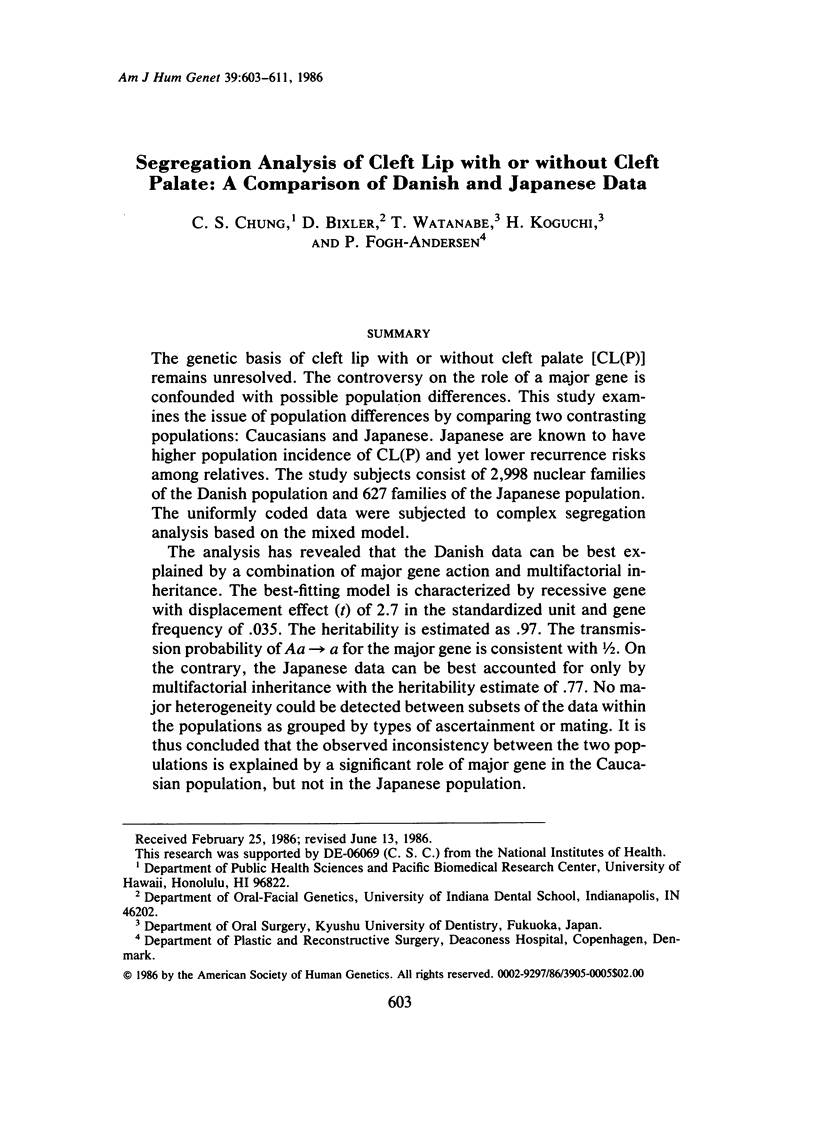
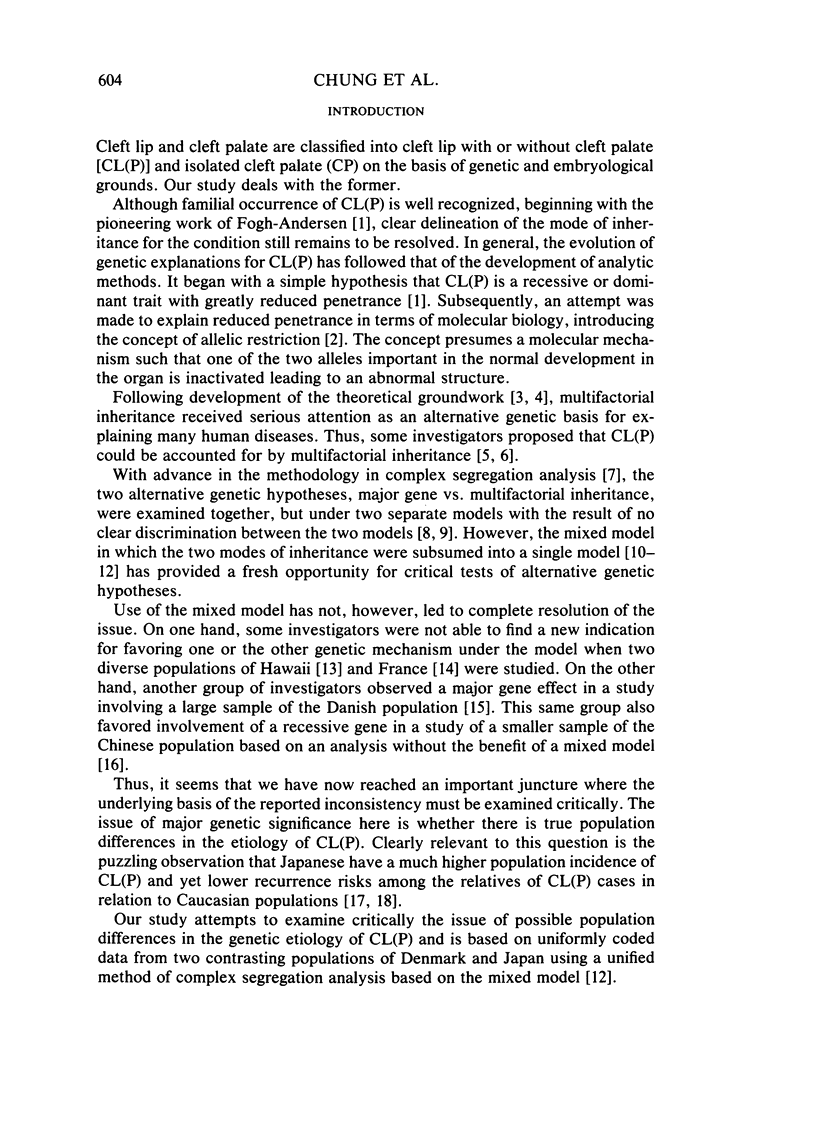
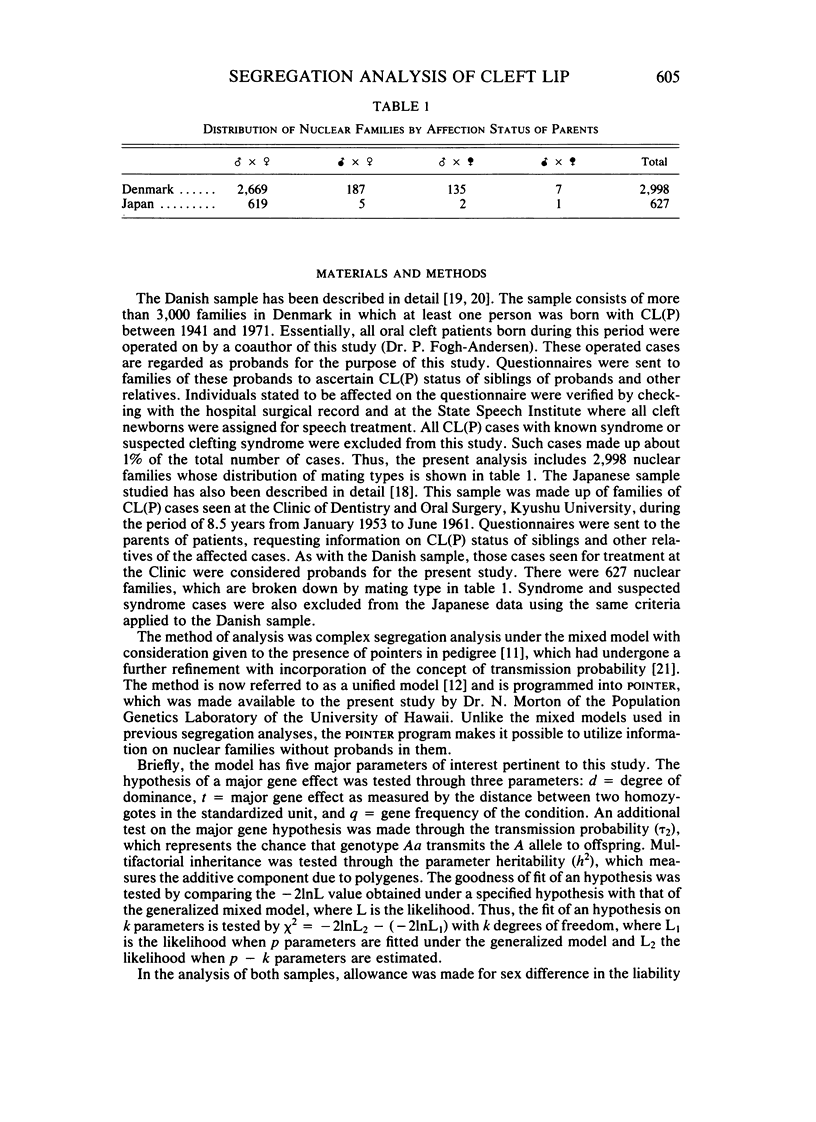
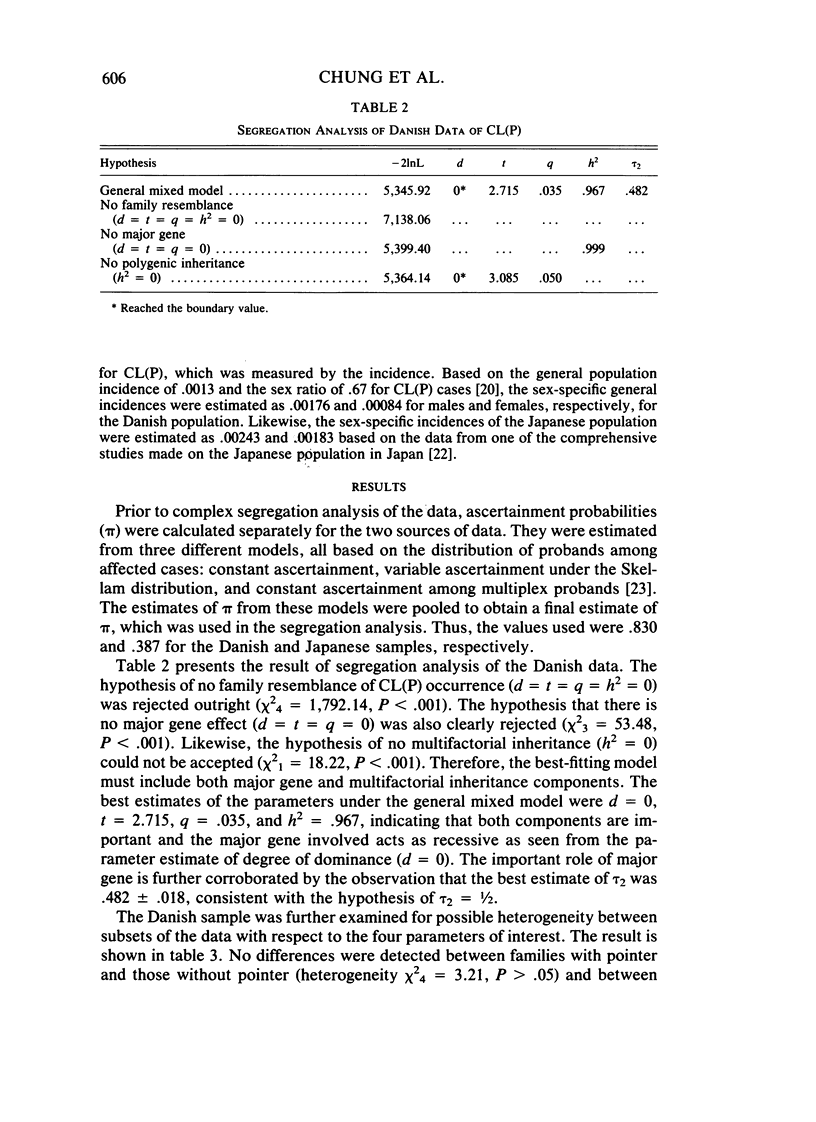
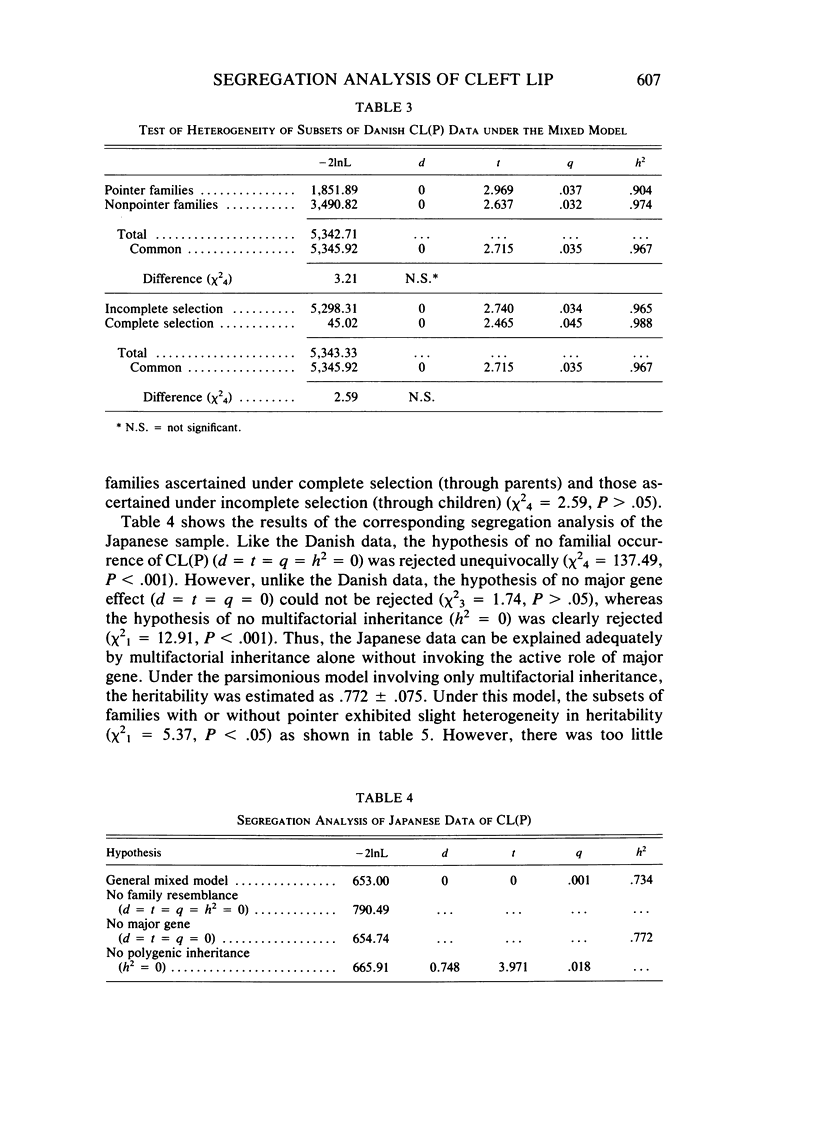
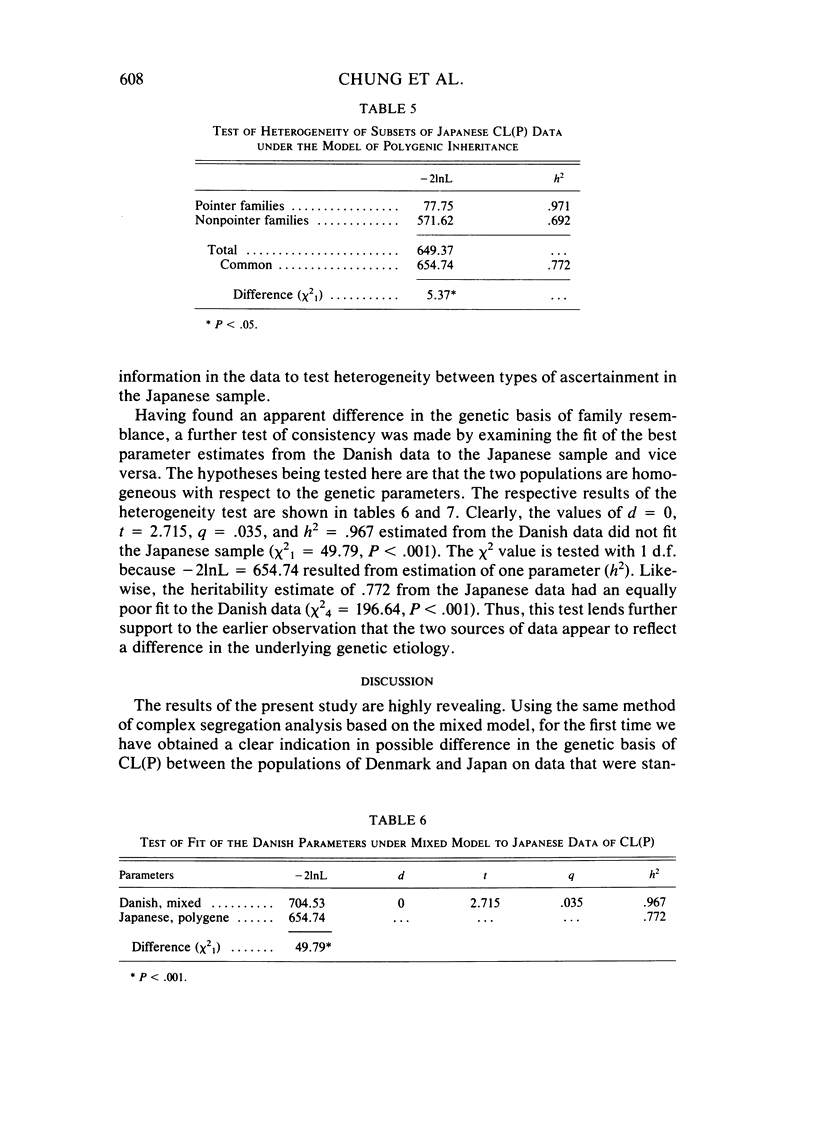
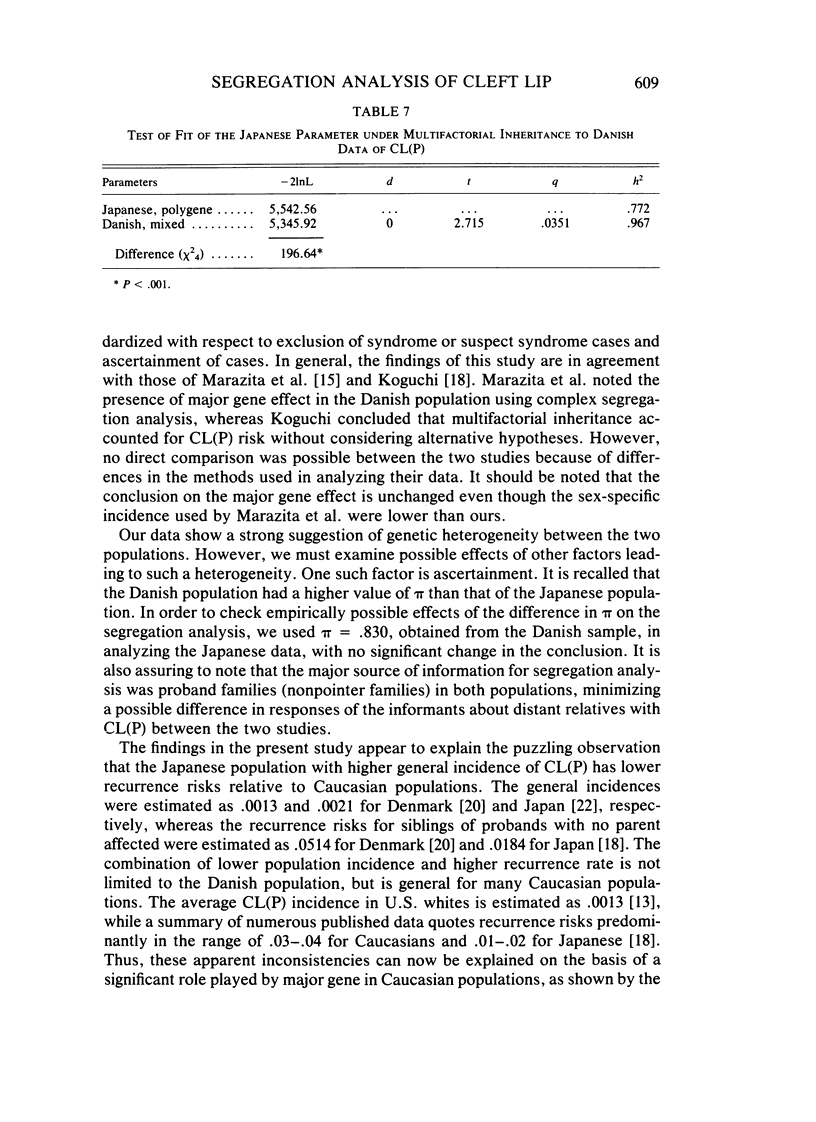

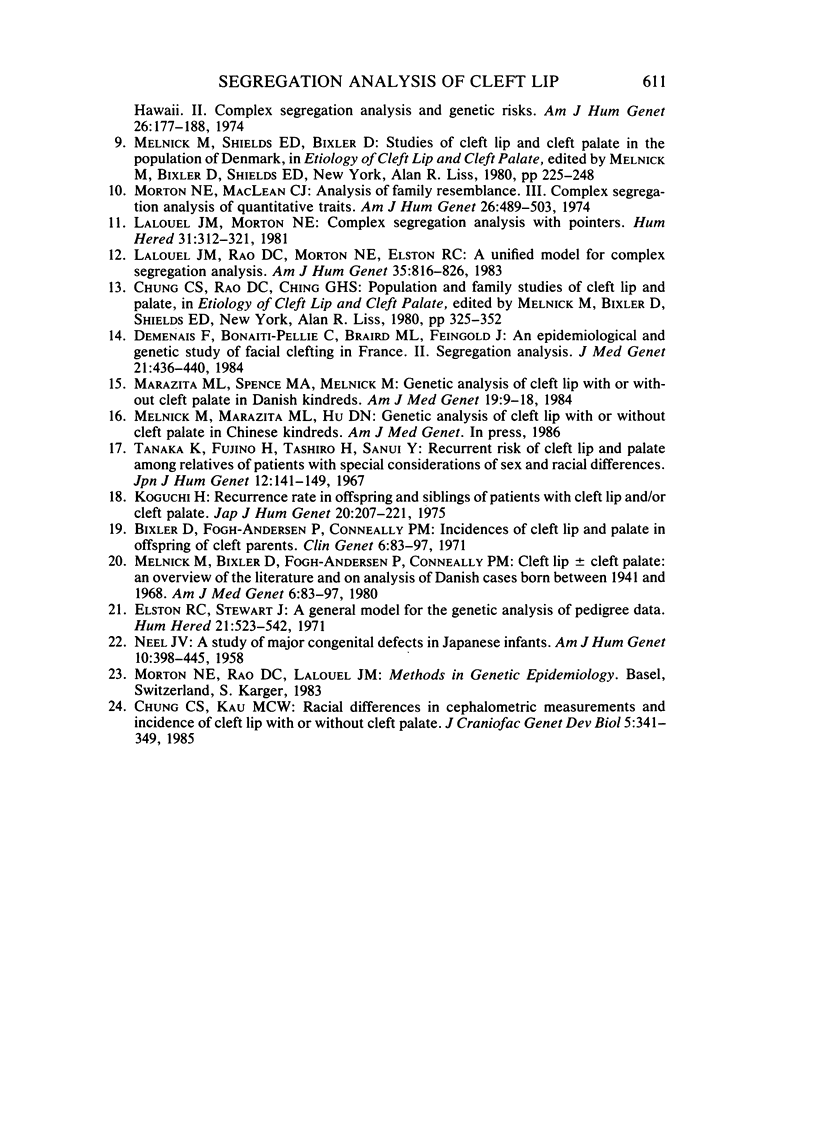
Selected References
These references are in PubMed. This may not be the complete list of references from this article.
- Chung C. S., Ching G. H., Morton N. E. A genetic study of cleft lip and palate in Hawaii. II. Complex segregation analysis and genetic risks. Am J Hum Genet. 1974 Mar;26(2):177–188. [PMC free article] [PubMed] [Google Scholar]
- Chung C. S., Kau M. C. Racial differences in cephalometric measurements and incidence of cleft lip with or without cleft palate. J Craniofac Genet Dev Biol. 1985;5(4):341–349. [PubMed] [Google Scholar]
- Demenais F., Bonaïti-Pellié C., Briard M. L., Feingold J. An epidemiological and genetic study of facial clefting in France. II Segregation analysis. J Med Genet. 1984 Dec;21(6):436–440. doi: 10.1136/jmg.21.6.436. [DOI] [PMC free article] [PubMed] [Google Scholar]
- EDWARDS J. H. The simulation of mendelism. Acta Genet Stat Med. 1960;10:63–70. doi: 10.1159/000151119. [DOI] [PubMed] [Google Scholar]
- Elston R. C., Stewart J. A general model for the genetic analysis of pedigree data. Hum Hered. 1971;21(6):523–542. doi: 10.1159/000152448. [DOI] [PubMed] [Google Scholar]
- Fraser F. C. The genetics of cleft lip and cleft palate. Am J Hum Genet. 1970 May;22(3):336–352. [PMC free article] [PubMed] [Google Scholar]
- Koguchi H. Recurrence rate in offspring and siblings of patients with cleft lip and/or cleft palate. Jinrui Idengaku Zasshi. 1975 Dec;20(3):207–221. [PubMed] [Google Scholar]
- Lalouel J. M., Morton N. E. Complex segregation analysis with pointers. Hum Hered. 1981;31(5):312–321. doi: 10.1159/000153231. [DOI] [PubMed] [Google Scholar]
- Lalouel J. M., Rao D. C., Morton N. E., Elston R. C. A unified model for complex segregation analysis. Am J Hum Genet. 1983 Sep;35(5):816–826. [PMC free article] [PubMed] [Google Scholar]
- Marazita M. L., Spence M. A., Melnick M. Genetic analysis of cleft lip with or without cleft palate in Danish kindreds. Am J Med Genet. 1984 Sep;19(1):9–18. doi: 10.1002/ajmg.1320190104. [DOI] [PubMed] [Google Scholar]
- Melnick M., Bixler D., Fogh-Andersen P., Conneally P. M. Cleft lip+/-cleft palate: an overview of the literature and an analysis of Danish cases born between 1941 and 1968. Am J Med Genet. 1980;6(1):83–97. doi: 10.1002/ajmg.1320060108. [DOI] [PubMed] [Google Scholar]
- Melnick M., Shields E. D. Allelic restriction: a biologic alternative to multifactorial threshold inheritance. Lancet. 1976 Jan 24;1(7952):176–179. doi: 10.1016/s0140-6736(76)91277-0. [DOI] [PubMed] [Google Scholar]
- Melnick M., Shields E. D., Bixler D. Studies of cleft lip and cleft palate in the population of Denmark. Prog Clin Biol Res. 1980;46:225–248. [PubMed] [Google Scholar]
- Morton N. E., MacLean C. J. Analysis of family resemblance. 3. Complex segregation of quantitative traits. Am J Hum Genet. 1974 Jul;26(4):489–503. [PMC free article] [PubMed] [Google Scholar]
- Morton N. E., Yee S., Lew R. Complex segregation analysis. Am J Hum Genet. 1971 Nov;23(6):602–611. [PMC free article] [PubMed] [Google Scholar]
- NEEL J. V. A study of major congenital defects in Japanese infants. Am J Hum Genet. 1958 Dec;10(4):398–445. [PMC free article] [PubMed] [Google Scholar]
- Tanaka K., Fujino H., Fujita Y., Tashiro H., Sanui Y. Cleft lip and palate: Some evidences for the multifactorial trait and estimation of heritability based upon Japanese data. Jinrui Idengaku Zasshi. 1969 Jun;14(1):1–9. [PubMed] [Google Scholar]
- Tanaka K., Fujino H., Tashiro H., Sanui Y. Recurrent risk of cleft lip and palate among relatives of patients, with special consideration on sex and racial differences. Jinrui Idengaku Zasshi. 1967 Dec;12(3):141–149. [PubMed] [Google Scholar]


